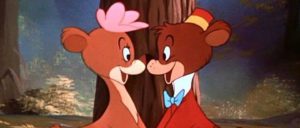Much before Chilakalapudi struck it big with Chhota Bheem, he left a cushy job as a software engineer in the U.S. to follow his gut instinct and pursue his passion for animation. “My inspiration was Walt Disney and like all kids, I was really fascinated by cartoons as a child. I remember getting up very early in the morning on Sundays to watch Disney and other cartoons on Doordarshan. I used to wonder why there were only Mickey Mouse, Donald Duck, Spiderman and no Indian heroic cartoon characters. Though I am not an artist, I had lots of ideas. The idea for Chhota Bheem and other characters arose from the deep desire to create a character with which Indian children could identify,” he shares. After having studied animation at the Academy of Art in San Francisco, U.S., Chilakalapudi set up Green Gold in 2001. Founded with his and his family’s investment, the team consisted of just four and he recruited technical people due to the lack of animators. “We targeted information technology companies, advertising agencies and movie makers to get started in animation and multimedia. In the beginning, we worked on all sorts of projects including web designing, brochure designing, corporate films, print advertisements etc.” The team grew to 16 people in two years time and while one half was generating revenue, the other half began working on productions. In 2003, friend and client, Samir Jain, convinced of Chilakalapudi’s vision, joined as an investor/partner and soon the company was producing shows.

The first product was Bongo – it was three dimension integrated with live action and was produced for Doordarshan in 2004. “We learned the business side of things besides being able to build a network of creative people with whom we still do work,” says Chilakalapudi. About the process of story development, he says, “It all starts with an idea, followed by story concept and script development. Once we have both right and are approved by the channel, we take it forward to the story board and then into production. It takes a month for a team of 30 people to produce a 30-minute episode of animation. And depending on the product, we recover costs in two to five years.” It uses Flash software for its two dimensional (2D) animation with international supervisors regularly overseeing its productions.
The success of Bongo gave Green Gold enough confidence to venture with its next production, VB. “We approached Cartoon Network with an idea for VB, our first 2D animated show. They were not sure about the commercial success of the idea, so they asked us to develop the product and show it to them. The risk was ours, and as we believed in our quality, we made the entire show and delivered it. They loved the programme and bought it. We went on to produce the Krishna movie series, which proved to be a winner in both revenues and ratings.” But convincing the channels was not always an easy task. “Most channels did not give us appointments and made excuses not to meet us. When we did manage to finally meet them, it was hard to sell our ideas and they often told us what to do instead. I think it was perseverance that finally did the trick,” he shares.
Now, competition from more established brands like Amar Chitra Katha and Tinkle does not faze him. He believes the Indian animation industry requires heavyweight players. “But as long as we are coming up with great ideas and are able to think out of the box, we have nothing to worry about.” In competing with western animated shows, Chilakalapudi says, “Though Bheem’s closest competitors are Doraemon, Ben 10, and Oggy and the Cockroaches, each of these shows are unique and have created a space for themselves.” And with Green Gold’s animation academy that offers 2D and 3D courses, attrition has been negligible.
